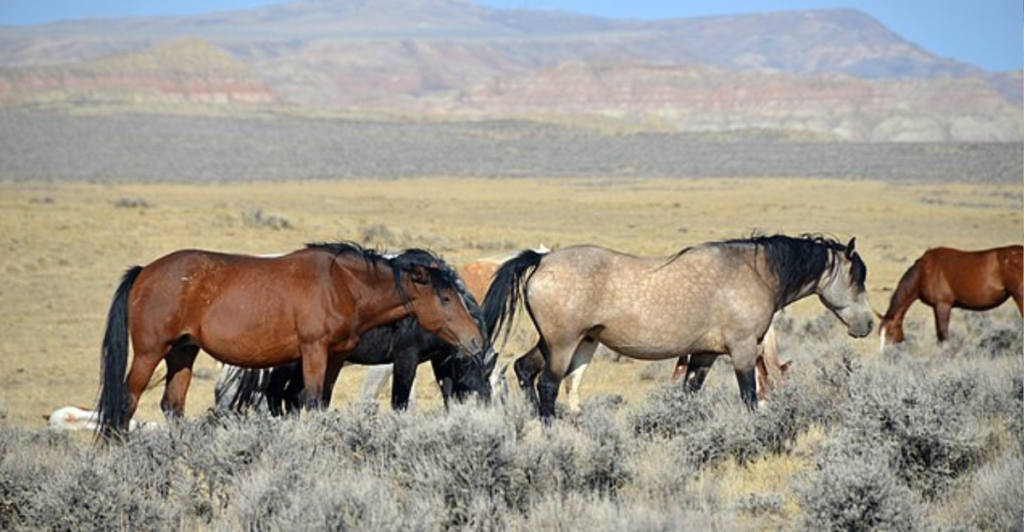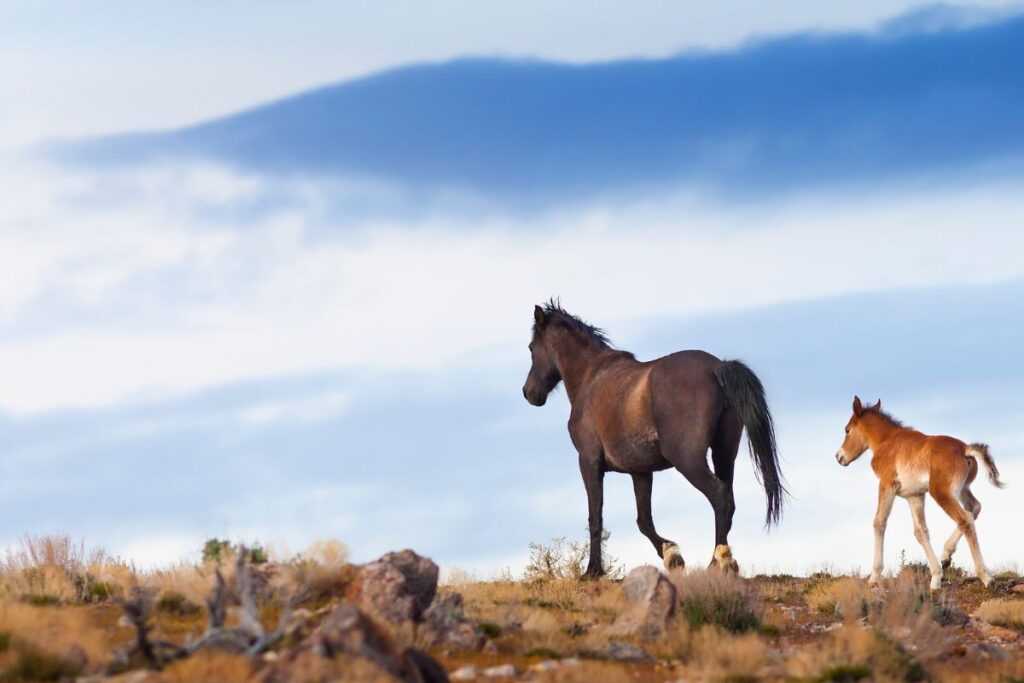
Mustangs, often called wild horses, are a captivating symbol of the American West. Descended from horses brought by Spanish conquistadors, these free-roaming equines embody resilience and history. While their iconic status is celebrated, the mustang’s presence raises questions about land management, species origins, and conservation. This article delves into the history, cultural significance, and controversies surrounding Nevada’s wild mustangs.
A Legacy of Spanish Conquistadors

Mustangs originated from Colonial Spanish horses introduced to the Americas in the late 15th century. Over time, they mixed with other horse breeds, creating the diverse phenotypes seen today. Some herds retain traits of their Spanish ancestors, like distinctive primitive markings. Mustangs spread across the Western United States, largely influenced by Indigenous peoples who adopted them for transportation, hunting, and trade.
Government Protection and Management

In 1971, Congress declared wild horses “living symbols of the historic and pioneer spirit of the West.” The Bureau of Land Management (BLM) oversees their care, ensuring population control and habitat preservation. To manage overpopulation, excess mustangs are captured and offered for adoption. However, with limited adopters, many horses end up in holding facilities, sparking concerns about their long-term welfare.
Land Use Conflicts

The mustang’s free-roaming nature often conflicts with livestock ranchers who share the land. Critics argue that mustangs deplete resources, while advocates stress their historic significance. Another debate surrounds whether mustangs are native or invasive. Supporters highlight their endurance and adaptation as proof of their naturalization, while detractors question their ecological impact.
Cultural and Historical Importance

Mustangs profoundly shaped Native American and frontier life. Tribes like the Nez Perce became skilled breeders, developing breeds such as the Appaloosa. Mustangs also featured in cowboy culture, with “mustangers” capturing and training these horses for trade. Their survival against harsh conditions reflects their endurance and adaptability, making them an enduring symbol of the West.
The Future of Wild Mustangs

Nevada’s mustangs face a challenging future. Conservation efforts aim to balance ecological sustainability and cultural preservation. As debates over land use and species status continue, mustangs remain a testament to the intertwined history of humans and horses. Safeguarding their legacy is vital to preserving the spirit of the American West.
Sources:
Stay connected with us for more stories like this! Follow us to get the latest updates or hit the Follow button at the top of this article, and let us know what you think by leaving your feedback below. We’d love to hear from you!







